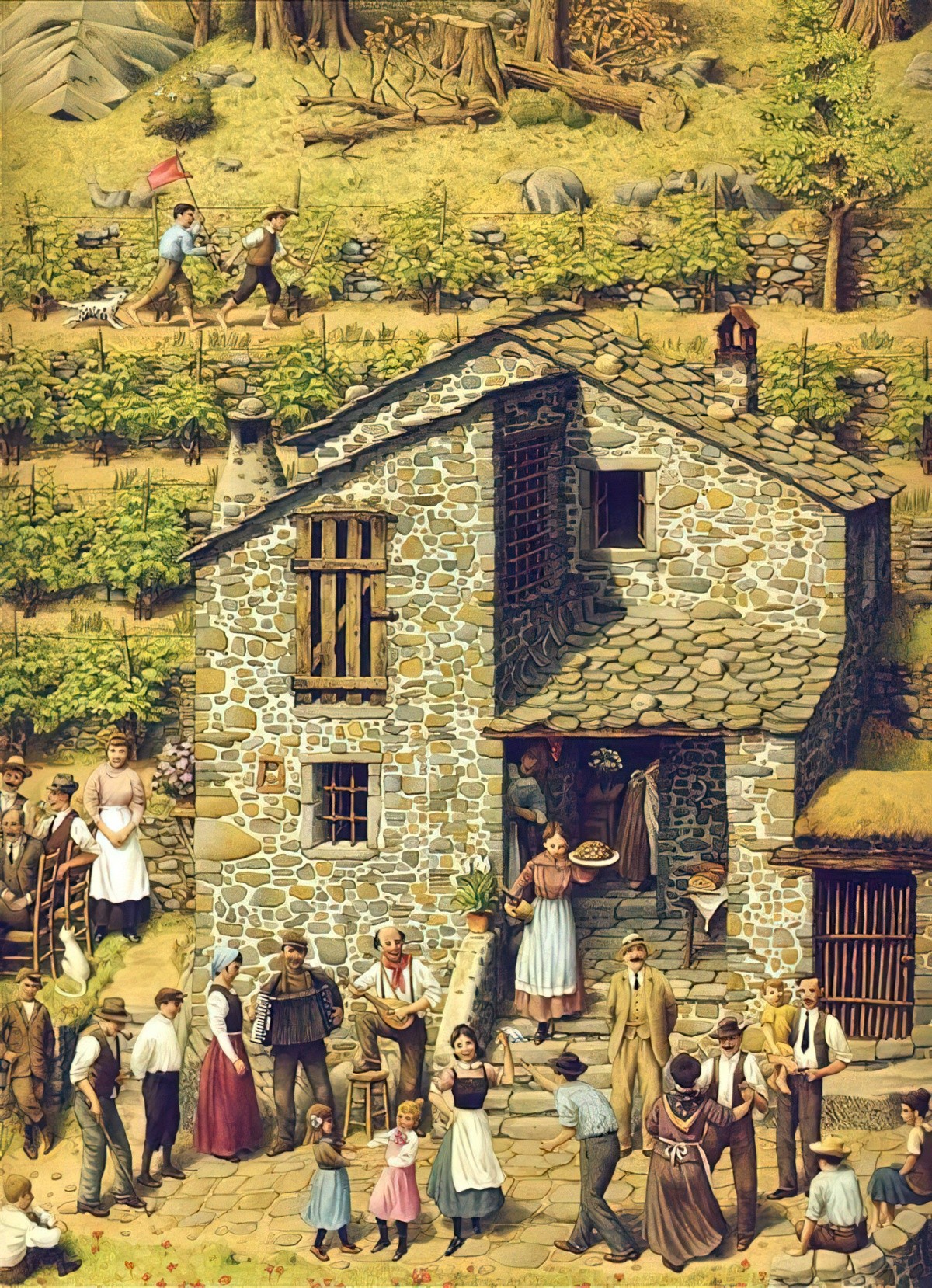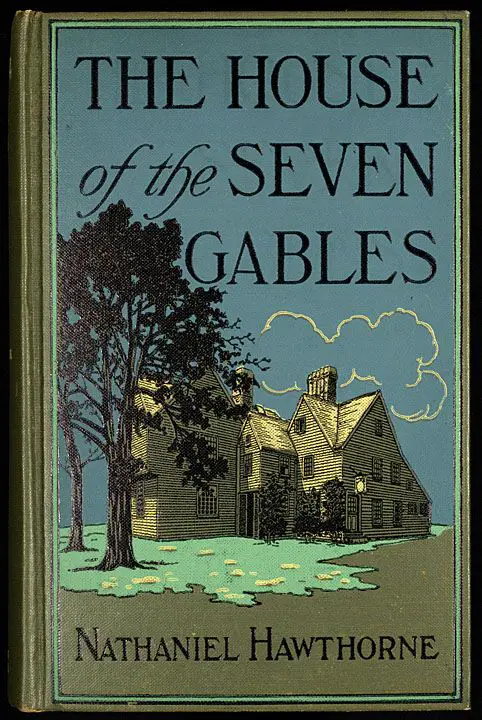Sometimes in literature you’ll hear a setting interpreted in the same way as a character. What does this mean? When should you do this?
See: How can setting be a character?
This article focuses specifically on buildings as character.
Most stories: Setting affects character.
In some stories: Setting interacts with the characters.
IS HOUSE AS CHARACTER A TYPE OF METAPHOR?
Related: Symbolism of the Dream House, from Gaston Bachelard’s Poetics of Space.
In that famous book, Bachelard questions whether the personified building in literature truly counts as ‘metaphor’. He wonders if it should be simply referred to as ‘linguistic imagery’, since ‘house as person’ seems like a bit of a stretch.
EXAMPLES OF PERSONIFIED HOUSES FROM LITERATURE
THE QUIET ARISTOCRATIC HOUSE
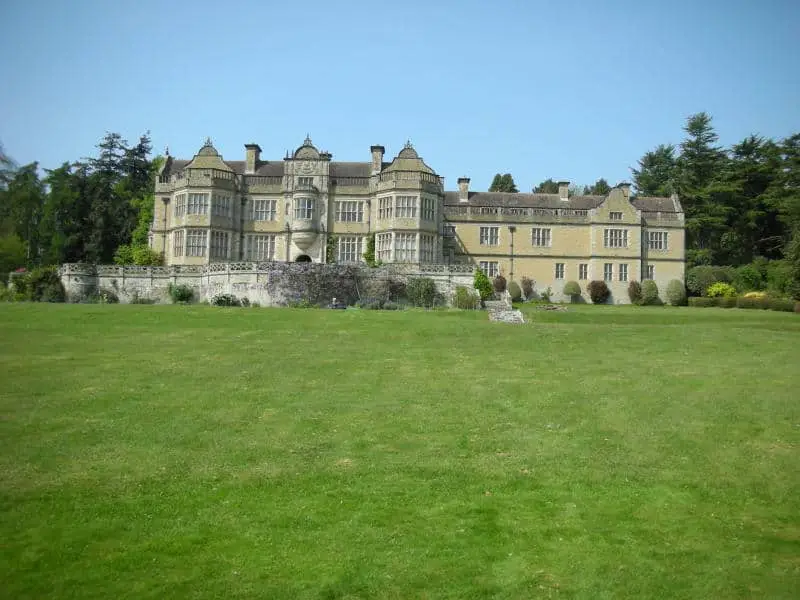
However elegant the old Adam-style building had been, however beautifully it once commanded the parkland, the walls could not have been as sturdy as those of the baronical structure that replaced it, and its rooms could never have possessed the same quality of stubborn silence that occasionally smothered the Tallis home. Emily felt its squat presence now as she closed the front door on the search parties and turned to cross the hallway.
Atonement, Ian McEwan
An excellent short story example of a personified, alive house is “There Will Come Soft Rains” by Ray Bradbury.
At ten o’clock the house began to die.
The wind blew. A falling tree bought crashed through the kitchen window. Cleaning solvent, bottled, shattered over the stove. The room was ablaze in an instant!
‘Fire!’ screamed a voice. The house lights flashed, water pumps shot water from the ceilings. But the solvent spread on the linoleum, licking, eating, under the kitchen door, while the voices took it up in chorus: “Fire! Fire! Fire!”
The house tried to save itself. Doors sprang tightly shut, but the windows were broken by the heat and the wind blew and sucked upon the fire.
The house gave ground as the fire in ten billion angry sparks moved with flaming ease from room to room and then up the stairs. While scurrying water rats squeaked from the walls, pistoled their water, and ran for more. And the wall sprays let down showers of mechanical rain.
But too late.
“There Will Come Soft Rains” by Ray Bradbury.
HOUSE ARCHETYPES
THE ANCIENT SCARY HOUSE
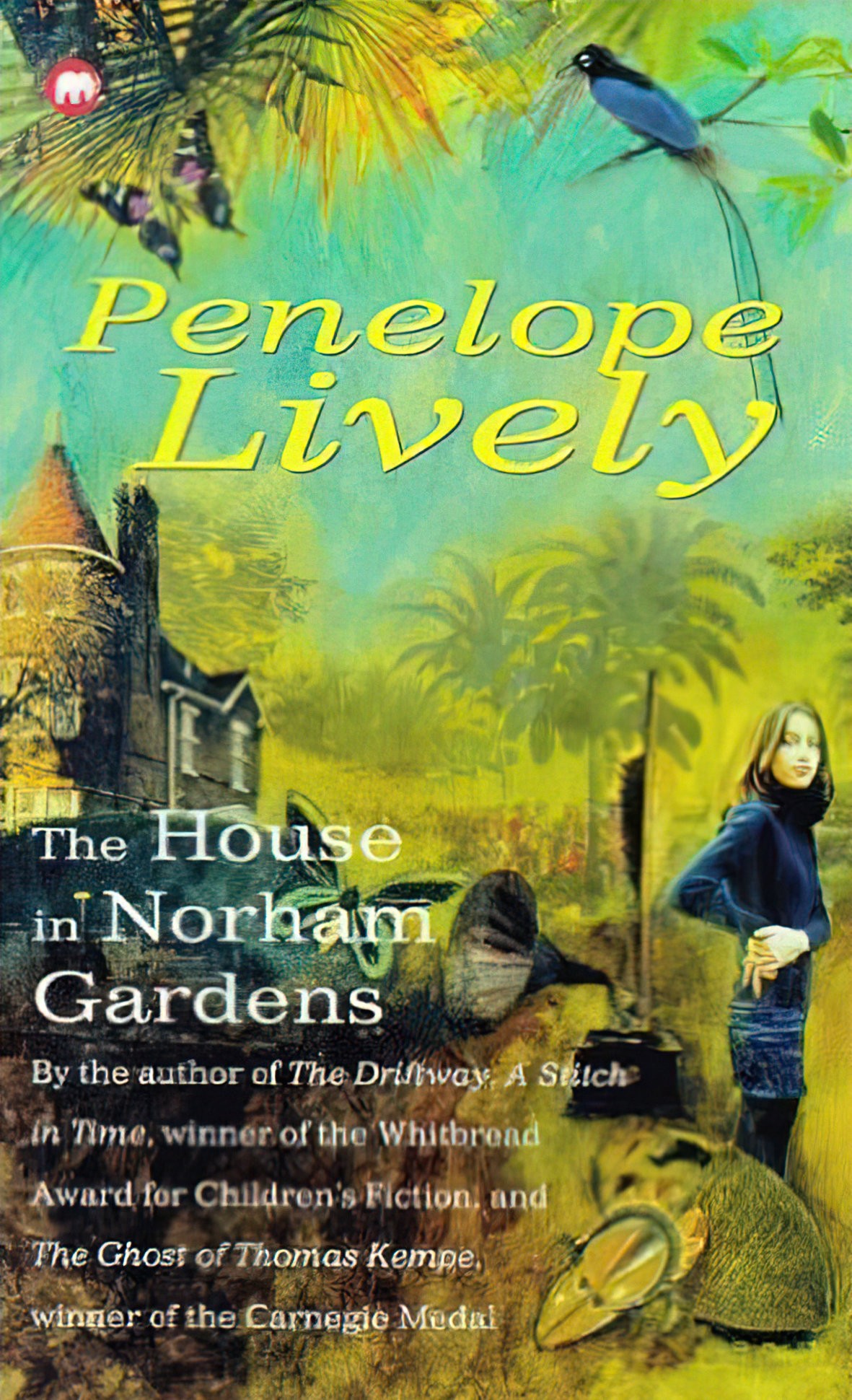
Belbroughton Road. Linton Road. Bardwell Road. The houses there are quite normal. They are ordinary sizes and have ordinary chimneys and roofs and gardens with labournum and flowering cherry. Park Town. As you go south they are growing. Getting higher and odder. By the time you get to Norham Gardens they have tottered over the edge into madness: these are not houses but flights of fancy. They are three stories high and disguise themselves as churches. They have ecclesiastical porches instead of front doors and round norman windows or printed gothic ones, neatly grouped in threes with flaring brick to set them off. They reek of hymns and the Empire, Mafeking and the Khyber Pass, Mr Gladstone and Our Dear Queen. They have nineteen rooms and half a dozen chimneys and iron fire escapes. A bomb couldn’t blow them up, and the privet in their gardens has survived two World Wars.
The House In Norham Gardens by Penelope Lively
Another example is Emily from “A Rose For Emily” by William Faulkner. See my post on Gothic Children’s Literature, in which the ancient, scary house is a common feature of the setting.
THE LONELY HOUSE
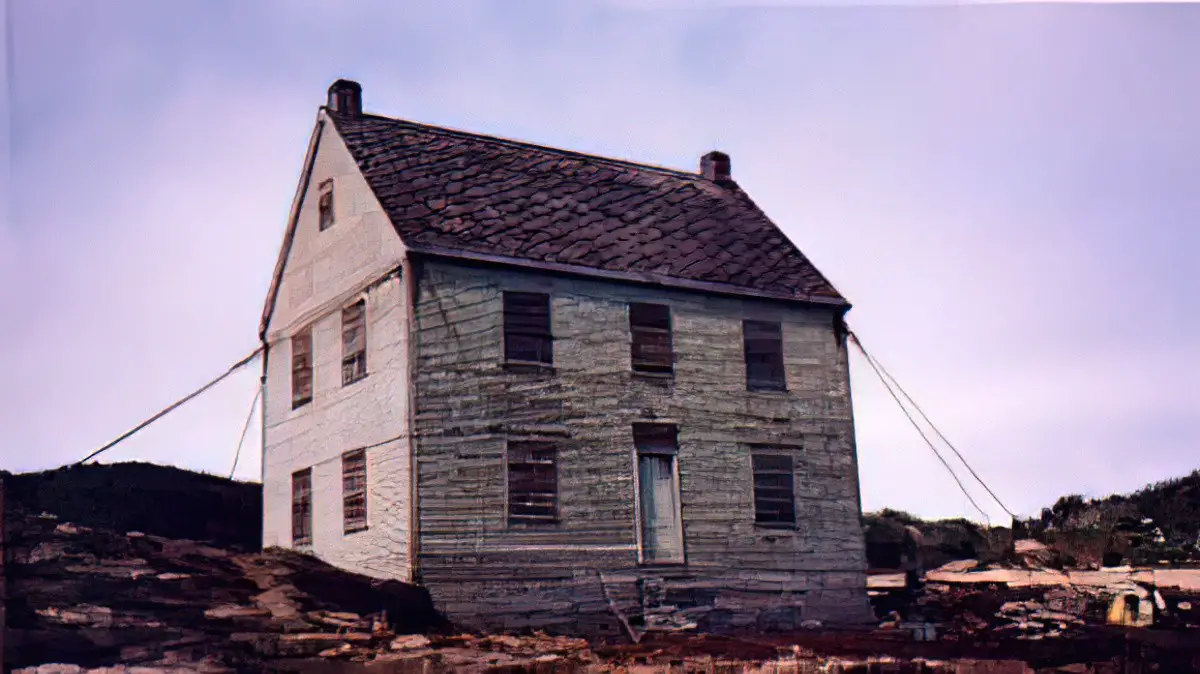
She ran with Sunshine up and down the curve or rock. The house threw their voices back at them, hollow and unfamiliar.
The gaunt building stood on rock. The distinctive feature was a window flanked by two smaller ones, as an adult might stand with protective arms around children’s shoulders. Fan lights over the door. Quoyle noticed half the panes were gone. Paint flaked from wood. Holes in the roof. The bay rolled and rolled.
The Shipping News by Annie Proulx
In “Prelude” by Katherine Mansfield, different characters have a different relationship with their new house in the country. The children see the house as a ‘sleeping beast’ but Beryl feels it is ‘very far away from everything’ (meaning visitors, suitors and men). Beryl writes to her friend that she feels ‘buried’ in the house Stanley has bought ‘lock, stock and barrel’. Stanley rattles and raises Venetian blinds before his wife Linda is awake. Beryl thinks she will ‘rot’ here. Linda has a headache and the garden is a ‘tangle’. To Kezia, the tree roots make designs like the tracks of fowls’ feet. In this house, even fashion and interior design repeat the association between appearance and social control.
For more on that, see Reading Mansfield and Metaphors of Form by William Herbert New.
It seems houses are quite commonly integrated with human inhabitants when the over-riding emotion is loneliness. Below is an example from Carol Shields, written by a first person narrator who is struggling with the fact that her eldest daughter is sleeping rough. Here she regards her family home and starts to question her interaction with it:
I often think of how Vicente Verdú, the Spanish writer, spoke of houses as existing between reality and desire, what we want and what we already have. Probably this old house is not as lovely as I believe. My eyes are curtained over. I used to be able to see the separate rooms with their colours and spaces, but now I can’t. I’ve overvalued its woody, whirled coves and harbours, convincing myself of an architectural spaciousness and, at the same time, coziness, when I really, long ago, should have pursued some professional decorating advice.
Carol Shields, Unless
The description of the house continues, and the focal length grows closer and closer, until the narrator is no longer talking about the house in general terms, positioning it in history, but on a single feature within — the bannister. Note how Shields uses the bannister to meld narrator and house together. In doing so, she turns the bannister into a living thing:
Every day I glance at the oak banister. Hands have run up and down its smoothed curves, giving it the look of a living organism. This banister has provided steady support, all the while looking graceful and giving off reflected light, and resisting with its continuity the intensity of ordinary human loneliness.
Carol Shields, Unless
In film and TV, the lonely house is often a house made of glass.
Related: “The Glass Lawyer” by Miguel de Cervantes (Don Quixote) is about a man called Tomás Rodaja who believes he’s made of glass. “Glass Delusion” was a documented phenomenon from the Middle Ages to the C19th. See: “Help! I’m made of glass!” by Elizabeth Hopkinson.
THE FAT LADY’S HOUSE
A common trope in storytelling is the fat woman confined by her house, taking up too much space in relation to the man, who is centred. There are major ideological issues with this trope. See it at work in What’s Eating Gilbert Grape? and even in children’s fiction. I discuss it further in my analysis of Monster House.
HOUSE AS A CREATURE NAPPING IN A MEADOW
Joan
1995
The house looked living. Mama squeezed my hand as the three of us gazed up at it, our bleary exhaustion no match for the animated brightness before us.
“Papa Myron selected and placed each stone of the house’s foundation himself,” she whispered to me and Mya. “With the patience and diligence of a man deep in love.”
The low house was a cat napping in the shade of plum trees, not at all like the three-story Victorian fortress we had just left. This house seemed somehow large and small at once—it sat on many different split levels that spanned out in all directions in a wild, Southern maze. A long driveway traversed the length of the yard, cut in half by a folding wooden barn gate. But what made the house breathe, what gave the house its lungs, was its front porch. Wide stone steps led to a front porch covered in heavy green ivy and honeysuckle and morning glory. Above the porch, my grandfather had erected a wooden pergola. Sunlight streaked through green vines and wooden planks that turned the porch into an unkempt greenhouse. The honeysuckle drew hummingbirds the size of baseballs; they fluttered atop the canopy in shades of indigo and emerald and burgundy. I could see cats on the porch—a dozen of them, maybe, an impossible number except for what a quick count told me. Some slept in heaps that looked softer than down, while others sat atop the green canopy, paws swiping at the birds. Bees as big as hands buzzed about, pollinating the morning glories, giving the yard a feeling that the green expanse itself was alive and humming and moving. The butterflies are what solidified my fascination. Small and periwinkle-blue, they danced within the canopy. The butterflies were African violets come alive. It was the finishing touch to a Southern symphony all conducted on a quarter-acre plot.
opening to Mephis, a 2023 novel by Tara M. Stringfellow
WHEN INTERIORS COME ALIVE
Tetsuya Ishida was a Japanese artist who lived from 1973-2005. A constant theme across his work was integration of this man (not himself, though similar) with items within the household.

In children’s literature, especially of the 20th century, household items were quite frequently depicted as coming to life, especially at night.
A stand-out example of that is Goodnight Moon. Though nothing literally animates in that story, the act of bidding them goodnight suggests sentience.
The birds-eye-view of a village below depicts faces on every object. I’m not sure whether this view of night-time is designed to reassure children (you’re not alone!) or create the delightful sensation of horripilation.

The painting below is by Roberto Innocenti, from an Italian picture book called Casa del tempo (House of Time).
A house in the country is at the centre of the narrative. The house is witness to the most significant events of the 20th century and these are told through large, color scenarios, rich in detail and which bring meaning to the text. Careful observation of the scenes, enable the reader to explore new details of the story and feel the emotion. Gradually we discover that the house, far from being just a passive witness, is charged with emotional meanings, reflected through the transformation of social change and the everyday moments, cheerful, dramatic and sad of the life of a family, which is then the life of the country.
The World Through Picture Books
